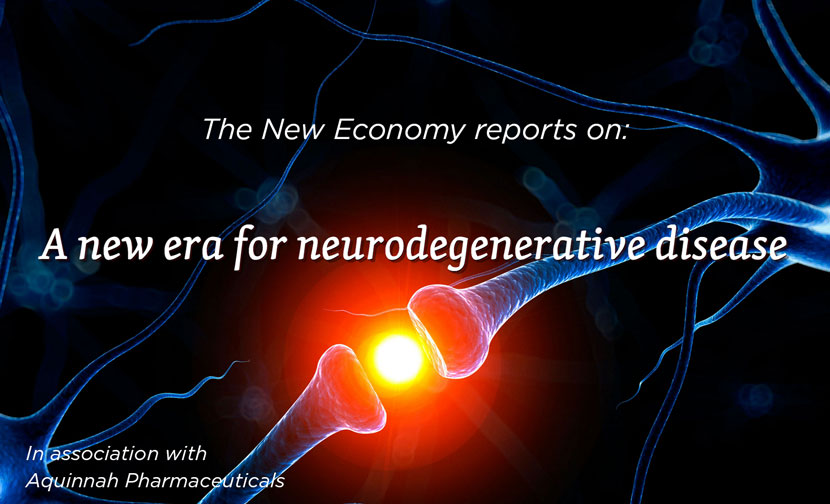Profiting from efficiency
As demands for cost and environmental performance keep growing in the energy sector, GE Energy is playing an essential role as a technological leader and a major player in the European energy market, helping energy suppliers improve their efficiency
As demands for cost and environmental performance keep growing in the energy sector, GE Energy is playing an essential role as a technological leader and a major player in the European energy market, helping energy suppliers improve their efficiency
Today, the awareness that carbon emissions need to be reduced at a global level is widespread, and attention naturally turns to the energy sector, which represents a significant part of these emissions. Yet energy demand is growing, putting more and more pressure on the sector. As GE technology generates one-third of the world’s electricity today, its role in solving the global energy challenge is to apply intellectual capital and find solutions for its customers that will work in the marketplace today and into the future.
Europe is the world’s second largest consumer of energy and one of the most energy-efficient continents, and so demand for top-level technology is very high. Today, the EU is developing a common European energy policy which essentially aims at tackling climate change, limiting dependence on imported hydrocarbons and ensuring the supply of secure and affordable energy for consumers, while contributing to the competitiveness of its economy. By 2020, Europe wants to reach the following sustainable development equation: +20 percent of renewable energy in energy consumption and -20 percent of carbon emissions; yet, it is still highly dependent on gas. As a consequence, the EU aims to improve security of supply and reduce risk of blackouts or gas supply interruptions. In parallel, the energy markets of the region are undergoing a significant transformation, as gas and electricity markets have been liberalised since July 1st, 2007.
In the future, Europe’s import dependency is forecasted to rise to 70 percent by 2030, as its hydrocarbon reserves dwindle and demand rises, and one trillion euros are needed over the next 20 years to meet expected energy demand and replace aging infrastructure.
GE Energy’s solutions
In this context, energy suppliers are looking to improve the efficiency of their power stations, transmission and distribution systems by implementing the latest technology, both to remain competitive and to meet European and national carbon emission targets. Although governments are pushing renewables and nuclear in order to control carbon emissions, today, fossil fuel still holds a significant place: in 2006, energy from oil, coal and gas represented 80 percent of the energy supply worldwide (Source: International Energy Agency). Renewable and nuclear energy take time to implement, which is why in the short term – meaning in the next seven to eight years – gas will be a key answer to the increase in the energy demand. GE Energy Services can help improve the efficiency and performance of existing gas power generation equipment, therefore improving profitability. This improved efficiency naturally leads to reduced emissions as with the same amount of gas, more electricity is produced. This activity represents an important part of GE Energy Services’ business and many their customers have required upgrades of retrofit existing gas and steam turbines.
Present in Europe for many years and leveraging years of experience in applying new technology, GE Energy Services is uniquely positioned to provide the latest, cost-effective practices and process improvements for plants to provide the most up-to-date innovations, ensure optimal economic performance and to achieve environmental targets with minimum cost and maximum business advantage. With a comprehensive portfolio of technology offerings and services, GE helps to improve plant performance in a variety of industrial and power generation applications while meeting environmental goals.
Service offerings are designed to help utilities, plant operators and manufacturers meet their operational goals, leveraging field expertise and unique technologies to deliver key results for their business. As demand for electricity continues to grow, GE Energy helps utilities increase their electrical output through improved operational efficiency and asset optimisation. Performance services units can help plants enhance both the performance and reliability of a plant.
With over 25 years in the Operational and Maintenance business, GE is one of the world’s largest third∞party providers of utility and power plant operation and maintenance services. Today GE manages more than 22,000 MW at 62 sites in 24 countries, helps ensure optimum performance at existing power plants and provides design consultation services for plants still in the planning stages. Utilising global resources, GE provides complete plant services across the turbine island and balance of plant – for both GE and non-GE equipment.
A wide portfolio
GE offers services in support of a wide range of power generating and transmission and distribution equipment, from simple maintenance services to sophisticated technology upgrades to end-to-end outage services.
Many significant advances in technology have been applied to new unit production: these advanced technology improvements can be applied to field units to achieve increased performance, longer useful life and higher reliability. Additionally, many development programmes have been specifically developed for application to existing operating units. These advanced technology update packages provide significant savings to customers due to reduced maintenance, improved efficiency and increased output.
In addition to these development programmes, GE Energy Services provides adjacent offerings. For instance, diagnostic softwares help predict failure for critical equipment and therefore minimise downtime; they hold a significant importance in the oil business, where an interruption of production represents a considerable shortfall. Another part of GE’s offering is Environmental Services, which helps reduce and control emissions of N2O, mercury or dust in power and industrial plants, as well as enhancing the thermo∞performance of some specific pieces of equipment by providing consultancy services to their customers. GE’s Transmission and Distribution solution helps reduce energy wastage in transmission and distribution systems, therefore contributing to energy savings.
Reducing N2O and CO emissions
As part of its continued expansion, GE Energy Services has just signed a contract with Endesa Italia, to help the Italian Power Producer meet Europe’s strictest emissions standards. On January 1st, 2009, the region of Lombardy in Italy will enact Europe’s strictest emissions standards for combined∞cycle power plants. The new requirements will limit nitrous oxide (N2O) and – in many areas – also carbon monoxide (CO) emissions to 30mg compared to present levels of 50 mg, for a reduction of 40 percent.
To comply with the new restrictions, Endesa Italia, now owned by E.ON Italia, turned to GE Energy’s latest gas turbine emissions control technology. As a result, two combined-cycle power plants in the region – Tavazzano and Ostiglia – are already meeting those standards, months before they were scheduled to take place.
GE retrofitted six GE Frame 9FA gas turbines – three operating at Tavazzano and three at Ostiglia – with advanced DLN 2.6+ combustion systems and new control systems. The project has produced a 40 percent reduction in N2O and CO emissions at both plants. Each gas turbine outage was completed safely and in less than 21 days to meet short∞cycle requirements. Exhibiting high levels of cooperation, the project teams were able to successfully coordinate more than 20,000 engineering hours, the sourcing and manufacturing of more than 4,000 parts, the delivery 450 tons of materials and the supervision of 50,000 craft labour hours.
GE Energy’s newest dry low N2O combustion system, DLN 2.6+, was developed to help power plant operators meet or exceed the increasingly stringent regulatory requirements in Europe and elsewhere around the world. Capable of reducing N2O emissions by 40 percent or more on GE Frame 9FA gas turbines, this technology has been certified under ecomagination, GE’s commitment to address the need for cleaner, more efficient sources of energy and reduced emissions. The DLN 2.6+ technology is capable of reducing combined∞cycle emissions without using chemical systems, thus eliminating the possible releases of harmful chemicals into the environment. In addition to reducing emissions, the new technology also enables the gas turbine to be operated at lower power during off∞peak periods, consuming less fuel and helping to reduce plant operating costs. This enhanced product builds upon decades of GE experience in combustion technology.
With the six units at the Tavazzano and Ostiglia plants, E.ON Italia now is operating the largest GE DLN 2.6+ retrofitted gas turbine fleet outside of the US. GE’s first two DLN 2.6+ systems were installed by AEM in Cassano d’Adda, and another system was installed by ASM in Brescia, for a total of nine systems presently operating in Italy.
Experience and expertise
In Europe, GE Energy represents 9,000 employees, with manufacturing and assembly facilities as well as sales and services presence in each European country. With such a large pool of field engineering resources and the largest fleet of power generation equipment under contract in Europe (70 percent), GE Energy has the expertise and the ability to deliver top-quality services to energy providers and is dedicated to optimising the efficiency and emissions performance of the installed base in all sectors of the energy industry.













